












































For one Louisville man, lacking housing for years not only kept him from stability and safety, but also wore down his confidence to speak for himself.
Until he walked into St. John Center, located on Muhammad Ali Boulevard in downtown Louisville, Mr. Boone felt lost for directions.
St. John Center is the city’s only full-service day shelter for men, providing several programs and services intended to help people without a home receive and sustain stable housing.

Last September Boone sought out the center and started applying for disability. Without strong reading and writing skills, he was becoming frustrated with the paperwork, until Housing Counselor Nikki Mullins approached him.
“Ms. Nikki Mullins approached me and everything started from there,” he says. “I felt confident about my next move and what she was going to do for me. I was able to come back and to keep coming back, because she made me feel that they were there for me and they weren’t going to let me down.”
While he was living on the streets, Boone knew he needed help and didn’t want to be
in his position anymore.
“I was really on the edge of destruction, giving up, until I came to St. John,” he says. “I was able to regain my spirit and I was able to reach my confidence level again. I was able to open up and share.”
As a housing counselor, Mullins not only aided Boone as he filed for disability, but she also walked alongside him as he applied for social security and food stamps, was hired on a part-time basis at Goodwill, secured temporary housing and got a Section 8 voucher.

“Working in this type of community atmosphere, you see a lot of hard things, and so with Mr. Boone I’m just really proud,” Mullins says. “I’m here to help. He was the one who made all the effort. It’s a privilege and an honor to see that.”
Last year 235 day-shelter guests of St. John Center moved home, and 74 guests increased their income.
“If it wasn’t for them I wouldn’t know what to do,” Boone says. “They were there for me when I needed them most. I’m thankful for St. John, for being on my side.”
The number of people receiving homeless services in Louisville has been increasing
since 2019, after a steady decrease between 2008 and 2018, according to Louisville’s Coalition for the Homeless.
There were 10,640 people in the city seeking homeless services in 2021. Along with the increase in people seeking services, those who reported having one or more disabilities increased by two-thirds.
In an effort to provide housing for the thousands of people in the city without a stable home, St. John Center is developing their first apartment complex with LDG Development. Louisville-based LDG Development is one of the largest affordablehousing companies in the country.
Ra’Shann Martin says this will be the first single-site supportive housing development of scale in the state.
“We’re really looking forward to bringing a new model of supportive housing here in Louisville, just to show the community and stakeholders what is possible when you invest in housing resources instead of
emergency services,” Martin says.
The complex will include 80 one-bedroom units designed specifically for people who have been without housing for a long time. These individuals who have a complex mix of mental and physical health needs can find it challenging to stay in housing, according to Martin.
The facility will be staffed 24 hours per day and will provide access to supportive services.
The location for the apartment was chosen meticulously by the center. Martin says there were certain criteria taken into consideration so that they could house anybody.
“When we decided to do the work, we knew that we wanted to be a landlord to everybody,” Martin says. “We needed to house everybody who needed housing. There are a lot of restrictions on where
people can live based on their backgrounds.”




A spot on Preston Highway was chosen for its vicinity to the bus line, food and medical resources.
Ground breaking is expected this summer, and leaders are hoping to have people moving in by July of 2025.
A total of $17.5 million was invested in the facility’s construction from Louisville’s American Rescue Plan fund. LDG Development is also supporting the cost by applying for low-income tax credits, according to Martin.
This project is just one example of the services that St. John Center provides to the Louisville community.
The day shelter and social services center that Boone walked into last September does not only offer the support of housing counselors. It is also a place where people


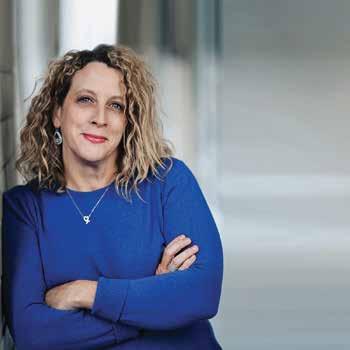
without homes can get fresh coffee, take a hot shower, receive personal mail, take phone calls and access personal products.

“It’s a day-shelter social-service center,” Martin says. “It’s almost like triage. People come to us and we say, ‘What is it that we can help you with?’ Then we get them to those services.”
Before she began working at the center more than a year and a half ago, Martin worked in social services at an agency focused on young-adult development. Her role included helping young adults succeed by connecting them to services and overcome barriers such as stable housing. When she was contemplating taking the role at St. John Center, a combination of the center’s values caught her eye.
“I started volunteering before making my decision and I very quickly saw that it is a place I wanted to be,” Martin says. “There’s a lot of beautiful things that happen here,
but more than outcomes, it’s really the way that we achieve the outcomes that is so impressive and really aligns with my own personal values.”
Those values include partnership, diversity, advocacy and volunteering.
Valuing community partnerships is at the core of St. John Center, meaning they are not interested in duplicating services, but instead want to connect people with those that exist and fill in the gaps.
The center partners with Veterans Affairs, Legal Aid Society, Centerstone, and Uniting Partners for Women and Children, among others.


One way St. John Center helps to fill in the gaps is by helping people obtain identification in the form of state IDs, birth certificates and social security cards. The center also advocates for changes in policy, to ensure that obtaining identification is not
another barrier to housing.
For those who are able to obtain permanent housing, the center offers supportive long-term case management and support. St. John Center provides in-home visits, assistance with job searches and disability benefits, along with life-skills classes and community-building opportunities.
In 2022 the center had 93 people in the Permanent Supportive Housing Program, and 98% retained housing for 12 or more months.
The Street Outreach Team is St. John Center’s newest initiative, which was started in 2019 as a part of the community-wide effort to address homelessness, according to Martin.
“The makeup of outreach is to utilize people with lived experiences to go to individuals who are living places not meant for human habitation and to build rapport with them, to build trust,” Martin says. “We really
spend a lot of time on relationships because that is what matters.”
After the St. John Center’s team reaches out to people without homes, it connects them with overnight shelters, health care and recovery services, among other resources.
Having the aid of volunteers is the lifeblood of St. John Center and facilitates the ability to fulfill their mission, according to Martin. Anyone at least 18 years old can volunteer at the center.
Martin says they are always in need of volunteers to help collect, sort and distribute mail, direct people, answer phones, check people in and out of the shower rooms, and hand out hygiene items, among other duties.
St. John Center is located at 700 East Muhammad Ali Boulevard in Louisville. For more info and to sign up to volunteer, call 502-568-6758 or visit stjohncenter.org.

Those looking to support their favorite charity and give back to the local community have the perfect avenue coming their way. Give for Good Louisville, the biggest day of online giving in Kentuckiana, returns September 14 for its 10th annual event, and organizers hope to continue the mission of sparking generosity across the region.
Give for Good Louisville is put on by the Community Foundation of Louisville, and aims to mobilize people, networks and capital to spark meaningful change in and beyond the city. Created in 2014, Give for Good Louisville has seen 137,300 individual donors invest $50.6 million into the community. Last year alone, more than $8 million was donated from 22,270 individuals in all 50 states and 47 countries.
“So often, Louisville is in the national news not for the greatest things,” says Christina Miller, director of marketing and communications for the Community Foundation of Louisville. “Give for Good Louisville instills hope because it is a living proof that when we do come together as a community, we truly do amazing things for each other. Whatever you’re most passionate about, you are going to find an organization in that area you can get connected with.”
Approximately 500 to 600 organizations take part in Give for Good Louisville each year, with about 75% returning annually. A wide range of missions are featured, including 501(c)(3) public charities, private foundations, veteran organizations and religious institutions. Businesses located

in Jefferson, Oldham, Shelby, Spencer and Bullitt counties in Kentucky, as well as Clark, Floyd and Harrison counties in Indiana, may participate.
Organizations are broken into tiers by size, with Metro United Way, Louisville Collegiate School and Virginia Chance School receiving the most donations last year. Many saw total donations top $100,000 or more from hundreds of different unique donors.
Miller starts talking to participating businesses months in advance, making sure all are prepared ahead of time for the big day.
“We give nonprofits everything they need in order to have a successful day,” Miller says. “We want to make it as easy as possible
on them, from the professional side of things to our trainings, assets and graphics. There are a number of nonprofits who are operating as a team of one. When you have one person doing multiple jobs, you can’t be everywhere at once. We try to make that as easy as possible by giving them those resources and consultations.”
Give for Good Louisville’s main objectives involve providing a platform for organizations to engage with existing donors, and creating opportunities to reach new ones. Potential donors looking to participate can do so by visiting giveforgoodlouisville.org and browsing the organizations. Donors unsure of which entity to support can also search the causes that resonate with them the most.
“Give for Good Louisville enables organizations the opportunity to gain new donors,” Miller says. “Nearly half of the donors are donating to an organization they





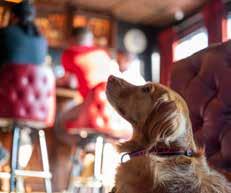
had never donated to before. That’s our intentions with the day. It’s an opportunity to come together easily as a community and invest back into our organizations.”



Collaboration with other businesses is also a benefit to participating. Give for Good Louisville facilitates relationships between organizations in an effort to identify and reach common goals, while utilizing advertising and media partners to promote the giving day, creating heightened awareness across the community. Miller says it is important for nonprofits to look at each other as partners that can help one another, rather than competitors for limited funds.
“There are enough resources out there for everyone, especially when it comes to funding,” Miller says. “When we work together, we are able to help more people connect to those resources. The giving day is the opportunity for that culture shift to occur. We really encourage that.”
No gift is too small during Give for Good Louisville, as any gift has the potential to help an organization win a variety of prizes. Some of the awards are for receiving the most gifts during certain time periods, being randomly selected for donation boosts, creating the most interesting social media post, and securing the most unique donors. Local companies such as Churchill Downs and the Sam Swope Family Foundation help support these prizes and give donors incentives to donate throughout the day.
“I’ve heard donors say they don’t know how their $10 donation will make a difference,” Miller says. “But that coupled with 20 other similar donations do make a difference. If you donate during certain periods of the day, your $10 donation can turn into a $1,000 donation if it gets selected for one of our prizes. We have a number of different prizes that focus on motivating donors to give throughout the day.”
Give for Good Louisville also features other organizations that participate primarily as business fundraisers. What that means is these companies encourage their employees to give, and compete for the title of the most generous business in Kentuckiana. Last year
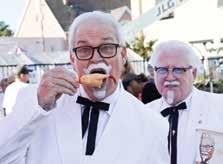

Churchill Downs and Derby City Gaming won this distinction by raising more than $19,000 from employees in one day.

“We always want to increase participation on the giving day, not only from the organization and donor side of things, but from local businesses and community leaders and media partners,” Miller says.
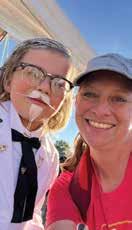
“That’s bonus money for the nonprofits and makes it fun for the donors.”


None of this would be possible without the event’s host, the Community Foundation of Louisville. As a leader in social impact and innovation, the Community Foundation brings together individual donors, nonprofit organizations and businesses partners
to transform the community through charitable giving. Founded in 1984, the Community Foundation is one of the largest charitable foundations in Kentucky with over $800 million in assets and more than 2,300 charitable funds created by donors. Miller says Give for Good Louisville is a huge part of the Community Foundation’s mission each year.
“When we first started as a foundation, we were providing services to folks who were looking to provide funds with us and we were distributing those funds back into the community,” Miller says. “This day came out of need for our community and allows us to respond to community needs. It’s turned into a massive and nationally recognized giving day that only attracts more people to invest in Louisville and, in this case, our local nonprofits.”
Miller hopes Give for Good Louisville will continue to grow and reach organizations
throughout the community. The event leaders have found the online-only format tends to work best for reaching high engagement and impact, rather than having an in-person event.

“It's definitely not going away any time soon,” Miller says. “For some folks, this is their leading fundraiser because it is so cost-effective. It takes a lot of money to put on a gala or silent auction. While there are some minimal costs with the giving day, it’s not a lot for what you get on your return. We will continue to use this as our leading way to connect with people. This day is that mechanism for the community to give back in profound ways.”
For more information, visit giveforgoodlouisville.org, email info@giveforgoodlouisville.org, or follow @cflouisville on Facebook, Instagram and Twitter for updates, announcements and more.
We don’t just help you look for a job. We make sure you find one. By understanding your experience and career goals, we develop a job search plan customized to your needs. We make sure to create the perfect match between you and your future employer by combining your requirements as well as theirs. Finding a job has never been this easy.



At the age of 5, Emmanual Sowders was taller than most of his classmates, standing at over 5 feet 4 inches tall. His mom wanted to get him involved with sports and thought football would be a natural fit for his stature. Sowders had no idea back then that football would become a lifelong love and possible future career.
During his four years as a varsity player in high school, he racked up an impressive number of accolades including district player of the year, first-team all-state, firstteam all-district and first-team all-metro. He participated in the East-West All-Star contest, and was a member of the Best of
the Bluegrass team.
“After I graduated high school, I decided I wanted to attend the University of Louisville and play football,” Sowders says. “I had a handful of offers to go play at other schools, but I decided to stay close to home and my family.”
Sowders was considering the University of Kentucky, Murray State, Purdue and Morehead State. Still, ultimately the idea of fulfilling a dream of his mother’s was the determining factor in his decision to choose UofL. His mom, Jennifer Jimenez Reyes, was a high school basketball player and dreamed of playing at the same school.


Ultimately she couldn’t make those dreams come true, but Sowders wanted to honor his mom by fulfilling that dream for her.
Sowders began playing football at UofL in the spring of 2018 and spent his first year redshirted. He used that time to develop and hone his craft, learning from other team members and the coaching staff. He says during that time, he became a stronger and faster athlete.
“During my sophomore year I worked to be a better player,” Sowders says. “During that year we went to the Music City Bowl game and won. Then when I was going into junior year, COVID hit, so that was
rough on everyone. I knew anything could happen at any moment, so I stayed ready for anything.”
He was a backup player in year four of his college career. He says he played whenever he was called upon. During year five he experienced the most playing time he’d ever had. Sowders says a fun fact is that in every game he played, his team won. During that year his team won the Fenway

Bowl in Boston. They also beat the number 10 team in the country.

“During that time I was able to step up in a leadership role as well,” Sowders says. “That’s something I’m very proud of. I have the opportunity now to get a lot more playing time and possibly start this year. I play all five offensive line positions, so they can bounce me around where I’m needed.”

For more than four decades, our mission at KGA has been to celebrate each child's accomplishments, no matter how great or small, while encouraging growth with a positive attitude and mutual respect.
We offer Boys’ and girls’ competitive and recreational gymnastics, NinjaZone, open gyms for all ages, day camps, First Stop Preschool, birthday parties, and more!




Sowders is also a valuable member of the Louisville community. He’s been involved in various acts of community service since he was a child.
“As a kid we always participated in fundraisers through the church,” Sowders says. “We gave food to the homeless. We donated school supplies for kids. Those church events were the foundation of my community service.”
Since then, Sowders has made it a point to volunteer through his church, and with his high school and college football teammates. He says because Louisville doesn’t have a professional football team, it has afforded his teammates more opportunities to help others.
“We participated in Habitat for Humanity and read to kids in schools,” Sowders says. “Participating in reading week with the kids is so much fun. I’ve also assisted with the IRONMAN marathon in Louisville. I’ve also worked with an organization that
provides services to students who age out of the school system at 21.”
Sowders was named an Atlantic Coast Conference Top Six for Service award winner in April. The award is given annually to six student-athletes from the conference who have exemplified outstanding service in their community and community relations.
Sowders was chosen because of his extensive work with the Ronald McDonald House, UofL MLK Day of Service, fundraising efforts for the raiseRED Dance Marathon, and participating in the Thanksgiving meal drive. MLK Day of Service is dedicated to encouraging Americans to participate in community service.
“I’ve worked with the Ronald McDonald house a few different times,” Sowders says. “The first time I went, they had just expanded their building and finished putting in new rooms. We helped clean
out all of the dust. Also, we put in cleaning supplies, stocked the individual rooms and stocked toiletries. The second time, we did a supply drive where we collected fun items for kids, toiletries and food.”
The raiseRED event is a dance-marathonstyle fundraiser for pediatric oncology and hematology in Louisville. Sowders participated in a monetary fundraiser for the program. He calls the 24-hour event impressive and says his team was one of the top fundraisers.
“Obviously it’s very nice and humbling to be honored with this award, but awards aren’t why I do what I do for the community,” Sowders says. “I was very grateful to receive the award, but it’s kind of strange being awarded for just doing what I always do. It’s a humbling experience.”
So what’s next for the upcoming sixth-year senior? He will play football this fall. He jokes that he’s overstayed his welcome
Tub Surrounds
Outdoor Kitchens
Vanity Tops

Fireplace Surrounds



Furniture Tops

and that he’s been at UofL since the Great Depression, but he does have football in mind for his future.



“Depending on what kind of season I have, I could have the opportunity to go pro,” Sowders says. “With there being three leagues now, including the NFL, XFL and the USFL, there is a little more available in terms of going pro now than in the past. Also, I have the opportunity to coach. I’ve been offered offensive line coaching jobs at Jeffersontown High School and Christian Academy of Louisville.”
Sowders isn’t just a one-trick pony, though. He plays six instruments including guitar, piano, violin, viola, drums and clarinet. He’s also considering becoming a strength and conditioning coach. And don’t worry, he won’t be leaving his acts of kindness behind.

“Even with all those upcoming opportunities, I still plan to be heavily involved in community service,” Sowders says. TWO

10 th anniversary
Shaker Village of Pleasant Hill
Saturday, September 16
Sunday, September 17
Old Fort Harrod State Park
Saturday, September 23
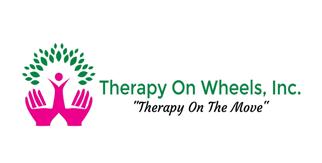
Sunday, September 24





Sponsored By:
1. Ozone layer pollutant
2. Break new ground?
3. Alaska resource
4. Roman commoners
5. Casino actions
6. Work-related malady (abbr.)

7. Air quality agcy.
8. Poet Elinor
9. Moth’s temptation
10. Charismatic trait
11. Colored like a certain hound
16. Jacket material
20. Gist
21. Beginning to cry?
22. Barn bundle
23. Bridge toll unit
24. Meadow sound
25. Advanced, in a way
28. Concert array
30. Carpentry tool
31. Create, as a phrase
32. Set aside
35. Hold off
38. Ball center
42. Congressional employees
44. Actress Witherspoon
45. Rush order?
46. City founded by Pizarro
47. Showy bloom
48. “___ go!”
51. Australian ratite
52. Aquatic appendage
53. “On the double!”
54. It may be missed
55. Act proverbially human
61. Still-life piece
Solution can be found on the magazine Facebook page
Justin Thomas was barely into his 20s when he discovered the world of colognes and perfumes. Captivated by the industry, he became a sales associate for big-brand companies within retail chain department stores. Now at age 28, he has channeled his passion into an entrepreneurial endeavor as the purveyor of 502 Fragrances, Louisville’s first-ever locally owned and black-owned fragrance brand.
In its first year of business, 502 Fragrances has already achieved recognition, both in

and out of state. In October 2022, just one month after opening, the company was selected to be the Minority Business of the Month for local professional soccer team Louisville City Football Club. Thomas has been a guest twice on WGZB-FM (96.5), Louisville’s largest hip-hop radio station, and was featured in November on the “Joe Warfield Show” podcast out of Atlanta. The exposure has led to sales in 14 states and a promising monetary beginning for a brand-new company. Equally impressive is that Thomas and his business partner, Jeff Houston, did not receive any outside funding to get up and running - just their own talents plus a lot of hard work.
“I was born and raised in West Louisville,” Thomas says. “When I was about 20 I wanted to learn how to dress better. I watched influencers on social media and came across Jeremy Fragrance, the biggest perfume influencer in the world. He talked about how wearing fragrance is so much more than just smelling good. I had never had an interest before, but I started to follow other fragrance influencers.”
His discovery of the world of scents and aromas became more than just a hobby, and he found himself working at fragrance counters in stores such as Dillard’s and Macy’s. Selling big-name brands enabled him to broaden his knowledge of the industry. He developed a following, and customers valued his insight and advice.
“Generally, most people wear only one scent, but you can have a fragrance wardrobe,” he says. “I had a customer when I worked at Macy’s who always wore only one brand. It’s known for being light and airy with lemon notes, a professional style just right for a nine-to-five office job. She told me she had a special event she was going to. I suggested she try something different for evening that was deeper and richer. Afterwards she came back and told me she got so many compliments.”
After a lot of research, Thomas developed two unisex fragrances. He is considered an indie perfumer, self-taught and producing a small-batch, craft-style product. Aimed at a niche market, the scents appeal to consumers who desire choices that are not

considered generic or bland, but rather unique. According to Thomas, large perfume houses strive for middle-of-theroad options that might smell nice, but often copy each other.
“When I was working behind the counter in stores, I used to explain to clients that there are a lot of different factors going on with scent,” Thomas says. “Big companies often have exclusive, luxury lines that aren’t well-known. People only know the scents they see on display, chosen to be sold in that store. They are separated by gender, but at times I sold the same fragrance to both male and females. Fragrances smell differently on different people and can change according to the scenery.”

When someone experiences a scent, they are smelling three distinct elements. Top notes are noticed immediately, right after application. Then, heart notes come forward and act as the backbone of the aroma. However, the base notes last the longest and build the fragrance memory. All three work together to make the finished product better than each essence would be on its own.








“I source my fragrance ingredients from the same large aroma chemical company that the high-end, international companies use,” Thomas says. “Modernday perfume is a mix of natural and innovative boost ingredients that are allergen free and long lasting. Some ingredients by themselves would be offputting and unpalatable. They must be used in conjunction with something. Plus, most ingredients must be diluted before they can be worked with.”

“Perfume that is 100% natural is not possible,” he continues. “It would be too expensive, but also it could cause allergic conditions. For instance, it’s impossible to create marine notes, such as sea air, naturally. Also, if perfume is light in structure, without additives, then it won’t last. To be lasting, it must have a high concentration of oils and long fixatives, which are fragrance notes that latch onto skin. 502 Fragrances scents are a 30% perfume concentration, making them more substantial than most mainstream products. Most people say our fragrances last a long time.”





The two scents crafted by 502 Fragrances are vastly different from each other, and each one consists of innovative and highend ingredients. Spicy and woody, warm Signature Hommes opens to citrusy tones. Sweet and playful Signature Femme is characterized by the aromas of peach apricot, vanilla and rose. Both are for men and women alike, and are priced at $35 for
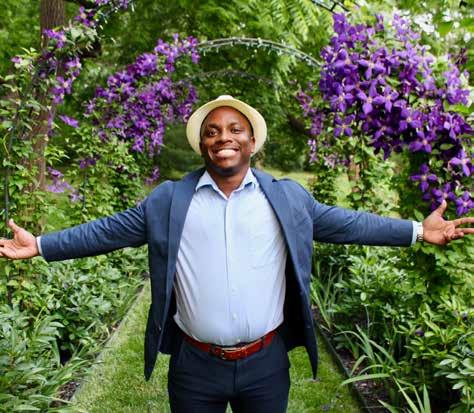
10 milliliters and $105 for 50 milliliters.


When asked if he ever came up with a result that was just awful during the development process, Thomas laughs. “Because of the high-quality ingredients I used, people said the fragrances never smelled cheap, but it wasn’t easy,” he says. “I went through the same process as the big companies - trial and error. I came up with a concept that I wanted each scent to be, and made blends. One scent took 40 to 50 tries, and the other 70 to 80. I tested them on friends and coworkers Sometimes we all liked the result of a trial, but in the end scrapped it because it didn’t fit the vision I had in mind.”
Thomas also sets a high standard for the company’s packaging and is continuing to develop the presentation aesthetic. The high-quality bottle containers achieve a minimalist, sleek and elegant look. Houston is the graphic artist behind the logo and labels.

The fragrances can be purchased several different ways. The company’s website ships out of state and accepts Apple Pay, major credit cards, and PayPal among other sites. The products can be found at Pocket Change Lou, a minority business hub located at 1519 Baxter Avenue in Louisville. Thomas loves being out in the community and enjoys setting up pop-up shops within other businesses, as well as being a presence at events and festivals. Recently products were showcased at Joe’s Palm Room in Louisville’s West End. 502 Fragrances has also been a presence at South 4th Street Night Market, a collaboration between Louisville Downtown Partnership and Louisville Independent Business Alliance. The outdoor shopping and food vendor experience takes place on the second Thursday of each month from 4 p.m. to 8 p.m. between Guthrie Street and West Chestnut Street.
Thomas still has a day job as a client


relationship consultant for U.S. Bank in Middletown, but he’s excited about the possibilities for his fragrance line. He hopes to introduce limited-edition seasonal scents. Currently he is developing one for summer that will feature tones of fig, lime and sea salt. Another future wish is a line of body products such as lotion, so a scent could be layered to last longer. Additionally, he hopes to create scents that reflect the ambiance of Louisville such as Churchill Downs.

“502 Fragrances has special, quality scents that people seem to love,” he says. “I have a lot to look forward to. I feel so grateful for all the support I have received and I’m excited about the future.”
Visit 502fragrances.com for more info, and view them on Facebook and Instagram for pop-up event details.





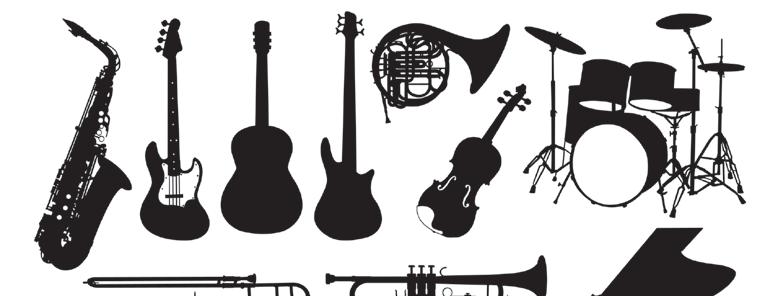




THERE’S NOTHING LIKE FALL IN OUR LITTLE CORNER OF THE WORLD. BECAUSE THERE’S SOMETHING FOR EVERYONE. Go for a hayride and pick a pumpkin; have some laughs on a surrey cart ride; saddle up for a trail ride; explore the archery and sporting clays range; get your kicks at FootGolf; maybe even squeeze in some pool time while the warm weather lasts.


Your whole crew will fall in love with all there is to experience here this season.

















 Writer / Kevin Gibson
Photography Provided
Writer / Kevin Gibson
Photography Provided
Deana Karem grew up in Jeffersontown and, thus, grew up with the annual Gaslight Festival held in the downtown square. Her earliest memories of the festival come from the 1970s, when she and her siblings would ride their bikes to the festival to hang out. The whole family would also often attend.
Today, Karem is president and CEO of the Jeffersontown Chamber of Commerce. To say the festival is different today than it was in the ’70s would be quite the understatement.
“It was just a one-day, I think a half-a-day

kind of affair,” she says. “It was held out here on Watterson Trail.”

This year’s version of the Gaslight Festival will feature 13 events over an eight-day span, including a golf scramble, 5K run/ walk, balloon glow, the annual Gaslight Festival parade, car show, the vendor event in the square that anchors the festival, and plenty more.


But, as Karem notes, this big festival in a small town started small itself. The festival dates to 1969, when the newly formed Jeffersontown Chamber of Commerce



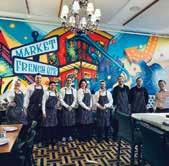
decided to hold a street festival to celebrate local businesses and the community as a whole. Karem says the local Jaycees also held a festival around that time, and it was decided that the following year, the two festivals would merge into one.
It was around this time that the Jeffersontown Historical Society and Restoration Committee had completed a renovation of the old town square that included the installation of gaslights on the streets, to illuminate the square at night and offer a throwback feel to the square. This led to the renaming of the square to Gaslight
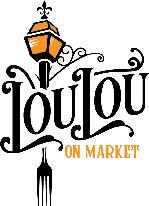
Square, and that’s how the Gaslight Festival got its name.
The early festivals were fairly basic events, with the vendor fair and other activities like military displays, political speeches, bus tours through the town to highlight its history, a special church service, and the release of balloons to fly over the city, Karem says.
The Gaslight Festival, now in its 54th year, gradually added events and days over time, and it has grown significantly even in the last 10 to 15 years. In fact, as Karem notes, every Chamber president over the past couple of decades, from Vicky Weber to John Cosby, has added their own signatures to the festival, helping to foster the growth.
Many traditional events have stuck around for years, including the longest-running Gaslight Festival event, the pipe-smoking contest, in which contestants light their
pipe, and the contestant who can keep their pipe lit the longest wins. While the popularity of the pipe-smoking contest has waned over the years, Karem estimates there are still usually 20 or more who participate.
“In the old days, they probably had 80 to 100 participants,” she says.
More recent additions include a drive to promote the restaurants on the square, a blood drive, live music, the balloon glow and the 5K. But most importantly, the event continues to be a celebration of community. Karem says the Gaslight Festival will attract some 200,000 people, which is fairly significant for a city with a population of about 31,000.
“This year’s Gaslight Festival crew stands on the shoulders of so many of our business leaders who came before us, and had the vision to start a community and business celebration,” Karem says. “This community celebration has grown over the years to offer

a variety of events for business, education, arts and cultural amenities, and the residents. The Gaslight Festival is a longtime tradition, and one of the most recognized arts and crafts and community festivals in the country.”
Jeffersontown Mayor Carol Pike called the festival “a homecoming,” saying it is “a week when we look forward to catching up with friends and family. Gaslight is also a time when we get to welcome visitors to our city, celebrate the many talents of the participating vendors, and continue to support our local business establishments.”
If you’re planning to attend the Gaslight Festival this year, there’s plenty to do. It starts September 7 with the Gaslight Community Blood Drive, which will be held at the Jeffersonian in Jeffersontown Memorial Park from 2 p.m. to 7 p.m.
On Sunday, September 10, the festival hits


“A friend knows the song in your
and sings it to you when you’ve forgotten the words.”
the road with the Gaslight Motorcycle Rally. A tradition since 2007, the rally is a 95-mile ride that begins at 12:30 p.m. at the Fraternal Order of Eagles. The ride includes four stops, and after the rally the participants will enjoy dinner, a door-prize drawing and live entertainment.
On Monday, September 11, the annual Gaslight Golf Scramble tees off at 8 a.m. After playing 18 holes, the winning teams and door-prize winners are announced at an awards ceremony. The following day, the Gaslight Festival 5K begins at 7 p.m. in front of Jeffersontown City Hall, and circles back to the finish line at City Hall as well.
Typically about 750 people participate, and once the runners cross the finish line, there’s an awards ceremony, power snacks and door prizes.
On Wednesday, September 13, the Business Appreciation Lunch salutes local businesses, with the City of Jeffersontown providing

lunch and live entertainment for all local businesses and their employees, from 11 a.m. to 1:30 p.m. at Skyview Park.
The fun really gets rolling on Thursday, September 14, with the annual Gaslight Festival Parade. The parade starts at Jeffersontown Commons Shopping Center, heads east on Taylorsville Road, then goes south on Watterson Trail to College Drive. Bring the entire family.
Then on Friday, September 15, the Gaslight Festival Balloon Glow lights up the skies, as hot air balloons illuminate and glimmer at Skyview Park. The event also includes live music, food and children’s activities, beginning at 6 p.m. (weather could affect the Balloon Glow times).
This culminates in the Gaslight Festival weekend, September 15 through 17, which will feature more than 135 arts and craft vendors, 130-plus area business, as well as civic and nonprofit organizations, in
the square and down cross streets offering plenty of shopping and discovery. Live performances from One Louder and other artists are part of the weekend, along with a kid’s day on Saturday morning and the Sunday car show in the 10000 block of Taylorsville Road. The pipe-smoking contest winds things up Sunday from 2 p.m. to 4 p.m.
All in all, the festival is a huge, citywide effort designed not only to attract visitors, but also to also celebrate the city, its businesses, its residents and its history.
“The Gaslight Festival is an amazing display of teamwork,” Pike says. “It’s a time for our city to shine and share the spirit of Jeffersontown with everyone.”
For more info, go to jtownchamber.com/ gaslight-festival/event-information. Expires
While smart devices have been around for decades, they gained more popularity when the world “shut down” as a result of COVID-19. With human interactions severely limited, the health service industry sought aggressive solutions. Many technologies were fast-tracked into production, such as physician visits via video, gym classes on YouTube and Zoom, as well as wearable devices that track health data such as blood glucose, blood pressure, heart rate, and weight shifts. With all the various devices, let’s briefly discuss them and how they could benefit you in managing your health.
Please remember, a smart device should never replace the advice of your health care provider.
First, what is a smart device? Techopedia defines it as “an electronic gadget that is able to connect, share and interact with its users and other smart devices.” These devices include televisions, refrigerators, tablets, glasses and many other products. Let’s talk about some of the more common devices that can help manage your health.
Tracking Devices simply track your data, whether it is input by the user or manually gathered from the device. These include wearable fitness monitors and smartphones if used during exercise. Apps can also help track what you want to monitor and improvements over time.

Monitoring devices are those devices or services that can actually take measurements, vital signs and velocity (in the case of falls).
Smartphones have Global Positioning System capabilities. With the help of apps, they can monitor the distance walked, number of steps taken and the duration of exercise. More advanced models can play exercise videos, track the hours you exercise, and provide interactions that are similar to working out in an actual gym. They provide the ability to track data over time. Smartphones really show their value when a wearable device is added.
Wearable devices include watches, activity trackers, heart-rate monitors and smart jewelry. These devices monitor and send back data to a smart device. While these devices are great for people who are interested in managing their health, where they really shine is in their ability to provide feedback to other devices, health care providers and even emergency services.
Johns Hopkins Medicine recognizes that falls are a leading cause of injury for senior adults. However, even healthy, active people can experience a fall that can cause serious and life-threatening injuries. Once the app is turned on, the watch monitors for any sudden stops such as a fall or bicycle crash. If one is detected, the watch will attempt to have the user indicate if they need help by announcements and buzzing. If the wearer does not respond in a predetermined time period, usually 90 seconds, the watch will contact emergency services and provide them with the latitude and longitude of the watch. It will also notify others of the potential fall and location.
The user needs to be motivated and able to use the device. It’s certainly smaller and more stylish than other wearable fall alert systems. While younger users may not have difficulty with technology, baby boomers may be less comfortable using this technology and may not wear it. The device also needs to be charged regularly.

Additionally, this device will not prevent a fall. It will only notify emergency services of the fall. While cost may be a factor, smartwatches are coming down in price and other companies are developing this technology.
Along with heart rate, respiratory rate and oxygen saturation, smartwatches can also provide an electrocardiogram (EKG).
While this device can never duplicate the services of a physician and an in-office EKG, it can provide the user with an EKG that they can provide to their physician. If an EKG is taken and the device detects abnormalities, it will advise the wearer to contact emergency services.
Wearable devices also include blood glucose monitors. These devices attach to the body




continuous monitoring and can send readings to a smart device such as a phone at a set interval. Dexcom, a company that manufactures blood glucose monitoring systems, claims it can detect low blood glucose readings as much as 20 minutes before glucose levels drop to a level where they can cause symptoms of hypoglycemia.


Numerous users can also be allowed to monitor your blood glucose, including your health care provider. With this information, your health care provider can provide you with faster adjustments in your medications.

Non-wearable devices include scales and blood-pressure cuffs. Blood-pressure cuffs are included in the non-wearable category as they do not have to be worn continuously, unless ordered by your physician. These devices are used to monitor chronic conditions such as congestive heart failure and hypertension. Like the blood glucose monitoring devices, they transmit data to your provider, who can monitor your readings. They will also receive an alert if your readings are out of range, and can adjust medication early and potentially lower the chances of having to go into an office or hospital.
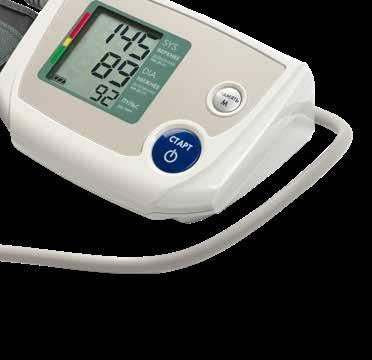
With any technology, there are price-point differences. Basic activity trackers can cost under $100, while a top-of-the-line smartphone and watch combination can come close to $1,000 depending on the features. You also need to take into account the cost of the services.





If you are interested in smart health monitoring, think about what you want to use it to monitor, and look at the services the devices can provide. If you don’t want to monitor your respiration rate and blood pressure, a wearable fitness tracker might be your best choice. However, if you have chronic conditions that need to be monitored, or if you engage in activities that could cause a fall (or are at risk for falls), a smartphone and watch combination may be just what you need. Finally, consult with your physician and insurance provider. If you meet certain criteria, you insurance may cover part of the cost of these devices.

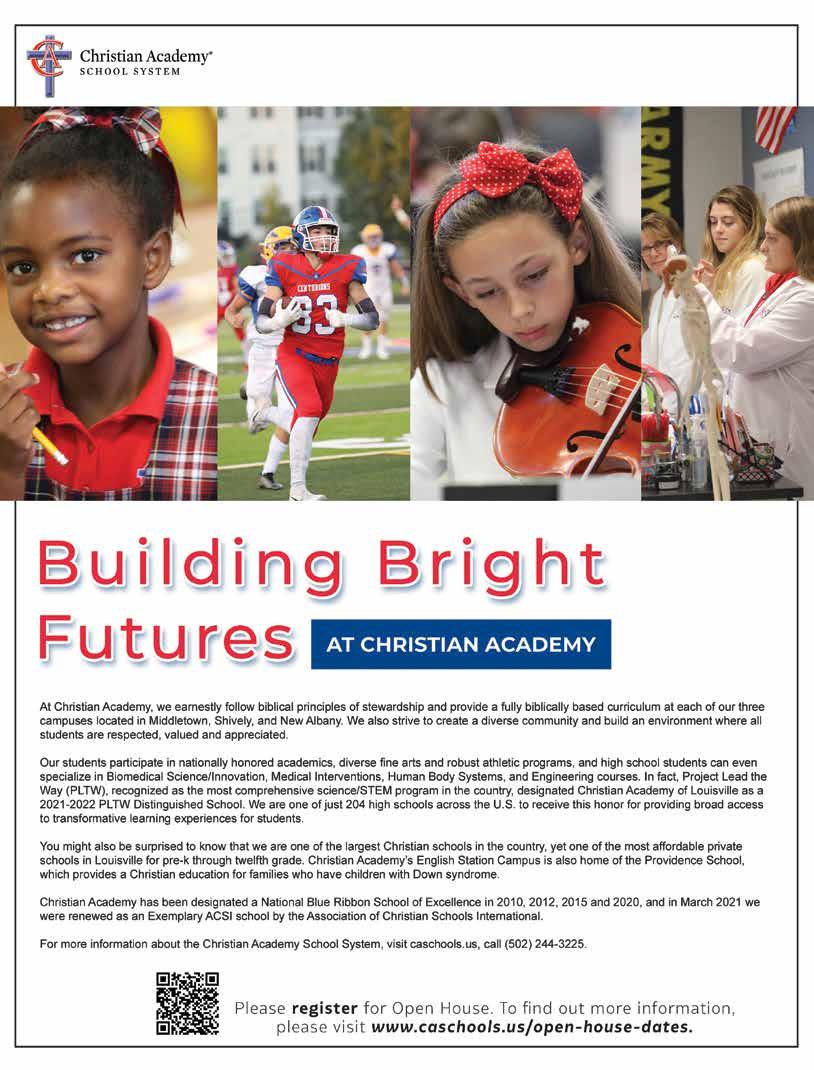
When experiencing a crisis, individuals and families often present a single image or “presenting issue.” That issue is the surface of the crisis, but more deeply, it may be related to one or a complex mix of concerns including mental health, substance use, crime victimization or homelessness. In moments of crisis, when police officers are on the front line of complex behavioral issues, they must focus on the presenting image to minimize the current level of risk to all those involved.
“In most cases, officers arrive on scene to assess the situation at hand, then provide them with a solution,” says Sergeant Sarah King of the Jeffersontown Police Department (JPD). “Although officers are diverse in many areas that they are dealing with, at times we simply do not have the resources to assist our community to the fullest extent that we wish to do.”
To minimize the risks in the moment and begin to address the larger picture, a team approach of both sworn officers and trained social workers allow for a more holistic approach that better meets the needs of individuals and the community.
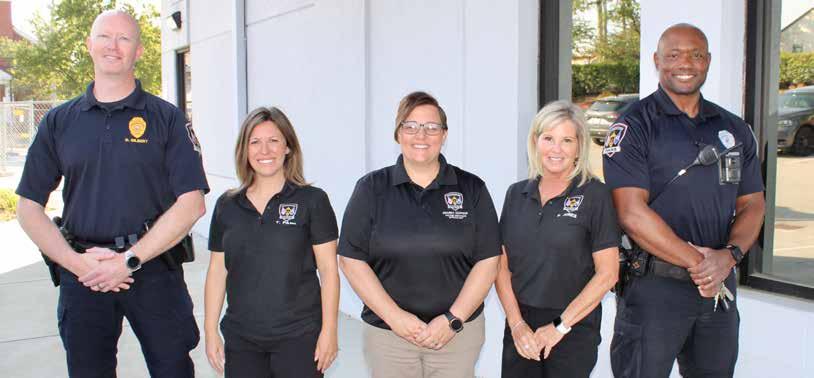
Understanding the complex dynamics, the JPD launched a new program in June of 2022 called REACH. The REACH program is a social-work unit embedded within the JPD that specializes in providing services to victims of crime, people experiencing substance misuse, mental health issues and homelessness. REACH is a combination of
three programs that have combined to bridge the gaps between law enforcement and the community - the Angel Program, Victim Services, and Angel Outreach.
The Angel Program is designed to redirect persons suffering from substance abuse from the criminal justice system to treatment resources, remove barriers to recovery, reduce stigma, and develop community trust. The JPD established the first Angel Program in the state of Kentucky in 2016. The Angel Program created an easy access point to treatment and redefined addiction as a disease, not a crime.
“Having spent the past four decades investigating and arresting those responsible for illicit drug trafficking, I am keenly aware that we cannot simply arrest our way out of this opioid epidemic,” says Richard Sanders, JPD chief of police. “It is equally important to focus our attention on the demand for these drugs.”
The main concept of the Angel Program is that anyone struggling with a substance use disorder can walk into the police department, turn in their drugs without penalty and receive help into treatment. A volunteer “Angel” paired with law enforcement would break down the barriers to finding an open bed, arranging treatment and transporting them to the services - an advocate and guide to help them on their path to recovery.
Being a victim of crime can be overwhelming, dealing with the trauma while you try to understand your rights, how to navigate an unfamiliar criminal justice system, and how to locate and obtain supportive services. In February of 2020, the JPD hired the first embedded social worker to create a program for victims of crime. Victim Services partners with victims, officers, investigators and community organizations to provide a network of care customized to meet their unique set of needs at no cost to them. The program empowers victims to navigate the complex criminal justice process, while responding to their emotional, physical and financial needs. From the onset of the crime, a victim services specialist is assigned to the case to provide information, support, resources and assistance, as well as link to specialized resources available to help them heal. To date, 1,278 victims of crime have received customized services through this program.
After four years of providing services to participants through the Angel Program (walk-in model), the JPD experienced a decline in Angel Program participants despite a rise in calls for services related to substance use. Other police departments offering similar police-assisted substance use recovery services nationwide began to evolve, utilizing paid, embedded social services clinicians, and other contracted or in-house
assistance to expand their programs. The JPD looked at ways to follow suit to meet the needs of the community. In 2021 the JPD hired two additional embedded social workers, to expand on the Angel Program and to provide outreach services to the Jeffersontown community.

Through the addition of the Angel Program outreach services, the department no longer needed to wait for individuals battling substance use disorders in need of supportive services to walk into the station and ask for help. The new Angel Outreach allows for a police social worker and officer to conduct outreach services in the community directly to individuals in need, and meet them where they are. This proactive approach identifies individuals and families at elevated risk for crisis, and services are offered through five pathwayscommunity member referrals, self-referrals and walk-ins, officer referrals, incidentbased referrals, and community outreach.
A social worker can talk with a person over the phone or meet them in the community. In being linked to services, people can continue to walk into the station requesting assistance with their needs related to substance use intervention, harm-reduction tools or homelessness.

Officers can request that the social work team reach out to community members that they have met in the community and identified as having an area of need. Officers also call the team out on scene when an individual could use support in the moment related to crime victimization, substance use, mental health or homelessness. Additionally, the social workers conduct outreach throughout the community and will provide assistance to link to services when a need is identified. To date, the outreach has been able to reach and provide services to 348 individuals and families.

The REACH program is the umbrella organization that operates the Angel Program (walk-in model), Angel Outreach Services, Victim Services, and all social services within the JPD. As an innovative collaboration between police and embedded social workers, the REACH program Responds to community members experiencing victimization, behavioral health crises and substance use disorders to Evaluate for individualized care, Advocate for needs, and Connect to support and services, starting them on a path to Heal.
The REACH program fills gaps in services, and brings expertise and resources to areas in which officers are unable to spend the time needed to support persons in moments of crisis. The REACH program’s concept of multiple pathways to services breaks down walls and difficulties accessing services. REACH social workers meet people where they are, in the street, in hotel rooms, at the
police station or over the phone. No matter the pathway, they are available to reduce barriers and help individuals and families access services to reduce crisis. This proactive approach provides officers the ability to return to their policing duties and calls for services that require rapid enforcement response. The program puts a face to services, and builds rapport and trust. The team understands that people are complex, and so are the barriers that limit their ability to access services and support. The holistic support offered by a social worker assists individuals with the customized services they need, to put them on a pathway for success.
If you or a loved one is in need of assistance after being victimized, or if you are struggling with substance use and/or mental health disorders, a team of social workers is here at JPD to guide and develop a customized plan, meeting you and your family where you are, guiding you to where you want to be. Simply stop in at 10410 Taylorsville Road in Jeffersontown, call 502-267-0503 and press 3, or email reach@jtownkypd.org.

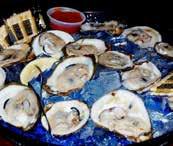




















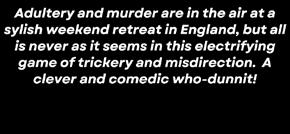



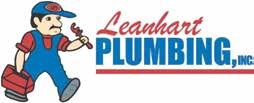







































Urgent Care Plus is right around the corner. You get advanced technology plus compassionate care. Less wait time plus no appointment necessary. It all adds up to the smart choice for the very best care, plus added convenience. So don’t put your health on hold. That’s the Power of U.
Allergies and Asthma
Allergy Shots
Bronchitis
Burns
Cuts and Lacerations
Colds/Flu
Ear Infections
Eye Illnesses
Fractures (Non-compound)
Foreign Body Removal
Injections
Lab Work
Migraines/Headaches
Minor Injuries and Illnesses
Nausea/Vomiting
Physicals
Sports Physicals
Employment Physicals
DOT Physicals
Pink Eye and Strep Sprains/Strains
Stomach Issues
Urinary Tract and Yeast Infections
Work Injury
Wound Care
We’re close to home and open seven days a week, so you never need to put your health on hold. That’s the Power of U.
UofL Health – Urgent Care Plus
Medical Center Northeast 2401 Terra Crossing Boulevard Suite 100 Louisville, KY 40245
502-588-0746
UofL Health – Urgent Care Plus

Hurstbourne Corners 9409 Shelbyville Road, Suite 104 Louisville, KY 40222
502-588-0740
Hours:
Monday - Saturday, 8 a.m. - 8 p.m.
Sunday, 8 a.m. - 6 p.m.
THAT’S THE POWER OF U
UofL
Plus.
The Plus makes all the difference.